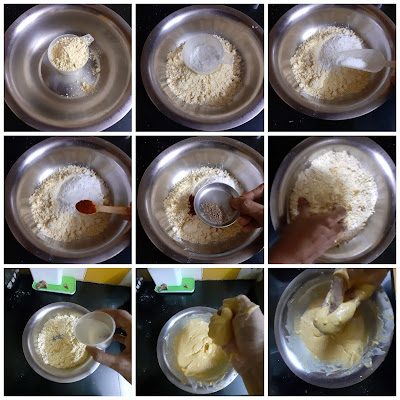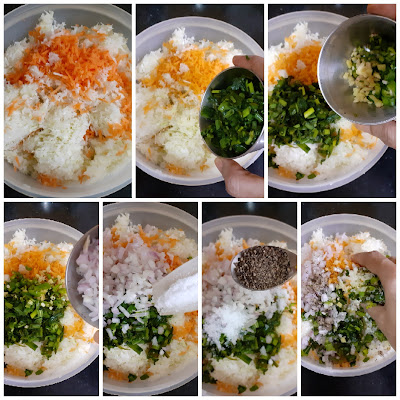There is no doubt that Aloo Parathas are the king of Parathas. But once the Methi leaves season comes, I make these Aloo Methi Parathas which are healthy as the Methi leaves are rich in iron and fiber. They lift the regular Aloo paratha to a different level. The Methi leaves themselves are very aromatic and when added to any dish they enhance the flavour and aroma of that dish manifold.
Aloo Methi is a popular north Indian subji that I have stuffed into these Parathas. which makes this dish a wholesome lunchbox option for kids and adults alike. It is also a good way to make kids eat the Methi leaves.
Using fresh methi leaves also gives the Parathas wonderful texture. I have not tried this paratha with Kasoori methi as firstly a huge amount of it will be required because dried leaves will lack volume, and secondly nothing can compensate for the taste of fresh methi leaves.
While you are here please check out my other flatbread/ Paratha recipes like Beetroot Paratha, Missi Roti, Garlic Lachcha paratha, and more...
Here is the recipe for Aloo Methi Paratha for you-
Ingredients for stuffing:
Aloo/ Potatoes 5 medium-sized, boil, skin peeled and mashed
Methi leaves/Fenugreek leaves 1 bunch finely chopped
Salt as required
Red chili powder 1 tsp(or more as per spice)
Turmeric powder 1/2 tsp
Coriander powder 2 tsp
Fennel powder 1 tsp
Garam masala powder 1/2 tsp
Mustard seeds 1/2 tsp
Cumin seeds 1/2 tsp
Oil for tempering 1 tbsp
Ingredients for dough:
Whole wheat flour 3 cups
Salt a pinch
Oil 1 tsp
Water for kneading
Oil for cooking the Parathas
Directions for making the stuffing:
Chop the Methi leaves finely and wash them thoroughly. Drain all the water and keep aside. Boil the potatoes, peel the skin, and mash them. In a pan or Kadai take 1 tbsp oil and heat. Drop the mustard seeds and as they crackle add the cumin seeds and turmeric powder. Now add the washed and drained Methi leaves and saute. Add salt followed by red chilli powder, coriander powder, fennel powder and continue to saute. The methi leaves will release moisture, keep sauteeing and let the moisture dry out. Now add the mashed potato to the Methi leaves, little by little, and mix them nicely. The Methi leaves should have combined evenly with the potato mash. Finally, add some Garam masala powder, mix once again, and allow the mixture to cool.
Directions to make the dough:
Take 3 cups whole wheat flour in a big mixing bowl, add a pinch of salt, a teaspoon of oil and mix well. Now adding water, a little at a time, combine to follow a slightly tough dough. A loose dough will not help in spreading the filling well. Rest the dough for 20 minutes.
Directions to make the Paratha:
Take the dough and pinch it into balls and divide it into 12 equal portions. Now dust one ball at a time in flour and roll it out into a palm-sized circle. Take about 2 tbsp of stuffing and put it in the center of the circle. Bring all the sides together and seal the stuffing. Now dust the stuffing filled ball in flour again and roll it out into a thick and medium-sized circle. Heat a girdle/tava and put the Paratha on it. Drizzle some oil over it and cook on one side. Flip over and cook on the other side too, drizzling a little oil on it. Cook both sides until brown dots appear. Repeat for all the dough and stuffing. The yummy and wholesome, one meal parathas are ready. Enjoy. Bon Appetit.
Serving suggestions-- as it is filled with a proper subji it actually doesn't need anything to go with. One can just enjoy them with a dollop of butter and plain curd.
STEPWISE RECIPE FOLLOWS:
1. Chop the Methi leaves finely and wash them thoroughly. Drain all the water and keep aside. Boil the potatoes, peel the skin, and mash them.
2. In a pan or Kadai take 1 tbsp oil and heat. Drop the mustard seeds and as they crackle add the cumin seeds and turmeric powder. Now add the washed and drained Methi leaves and saute.
3. Add salt followed by red chilli powder, coriander powder, fennel powder and continue to saute. The methi leaves will release moisture, keep sauteeing and let the moisture dry out. Now add the mashed potato to the Methi leaves, little by little, and mix them nicely.
4. The Methi leaves should have combined evenly with the potato mash. Finally, add some Garam masala powder, mix once again, and allow the mixture to cool.
5. Take 3 cups whole wheat flour in a big mixing bowl, add a pinch of salt, a teaspoon of oil and mix well. Now adding water, a little at a time, combine to follow a slightly tough dough. Rest the dough for 20 minutes.
If you tried this recipe and liked it please comment below. I would love to hear from you. If you have a query about the recipe email us and ill respond as soon as I can.






















































